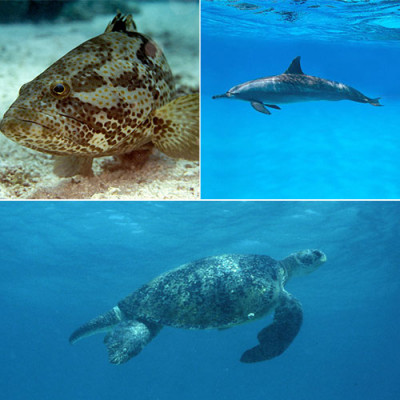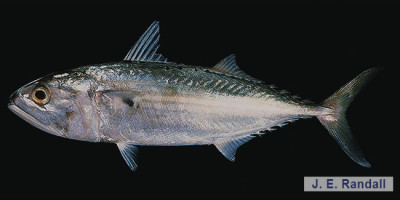Name: Indian Mackerel
Local name: Yarfa
Scientific name: Rastrelliger kanagurta
Classification: Class: ray-finned fishes; Order: perch-likes; Family: mackerels (Scombridae)
Size: It commonly reaches 25 cm fork length, with a maximum of 35 cm.
Habitat:
The Indian Mackerel forms schools of variable size, mainly in protected, plankton-rich coastal waters, down to depths of 70 m. Adults feed on macroplankton, mainly larval shrimps and fish by swimming with the mouth wide open and the opercula flared. Juveniles feed on phytoplankton and the small zooplankton organisms.
Distribution:
The species is widespread in the Indo-West Pacific, from the Red Sea and East Africa in the west, to Melanesia and Samoa in the east, north to Japan, and south to Australia.
Conservation status:
The IUCN Red List of Threatened Species considers it Data Deficient (DD) in its global assessment, and classifies it as Least Concern (LC) in the regional assessment for the Arabian Gulf. The Indian Mackerel is a commercially important species, which is caught with purse seines, gillnets, and stake traps.
Description:
The body is fusiform and slightly compressed, with a very narrow caudal peduncle, reinforced by two small keels on each side. The mouth is large and its rear margin extends behind the eye. The two dorsal fins are far apart from each other, the first one twice height as the second. Head and body are silvery blue-green dorsally, and silvery on the sides and ventrally, sometimes with a golden tinge. The upper half of the body is covered with two or three dorsal rows of small blackish spots and several blackish stripes below.








